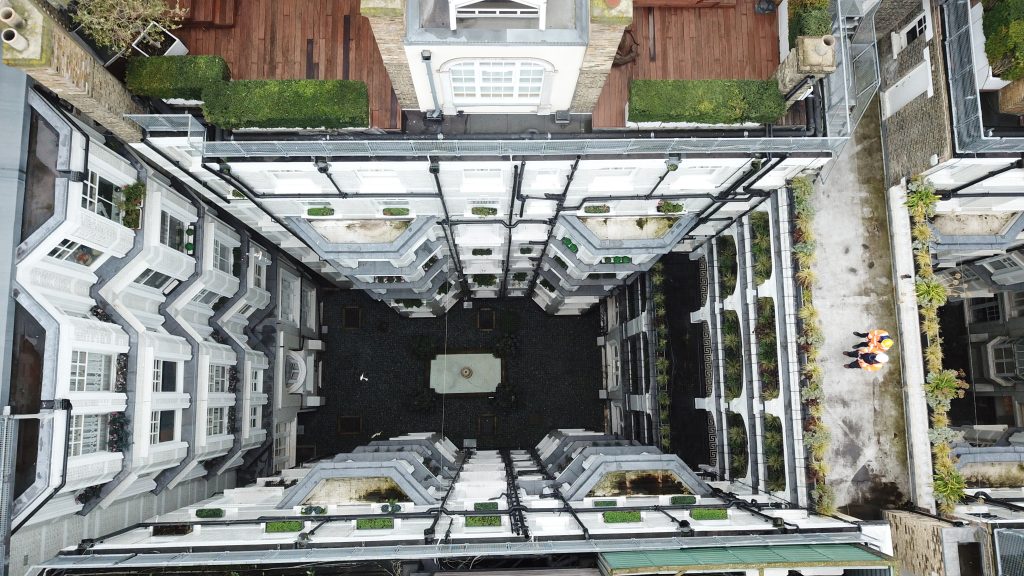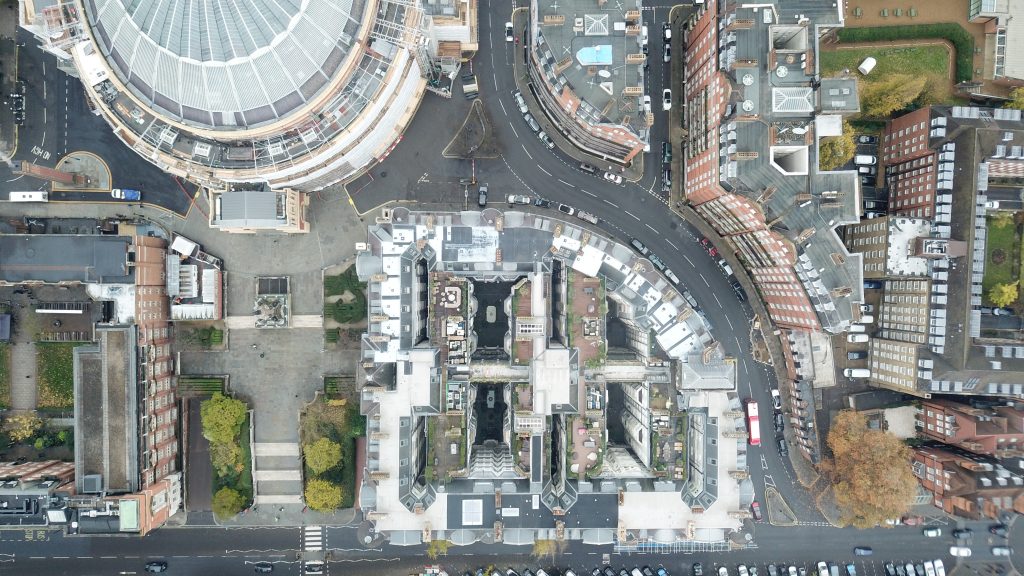tRIIO Turns to BIM for Albert Court Gas Mains Replacement Project

tRIIO, a joint venture organisation owned by Morrison Utility Services and Skanska UK, has completed major gas mains replacement work on Albert Court, a Grade II listed multi-occupancy building situated adjacent to the Royal Albert Hall.
The project to replace the ageing gas mains at the prestigious Albert Court building was delivered on behalf of Cadent by tRIIO design and multi-occupancy building (MOB) teams. Due to the complexity of the building, the mains replacement works had been put on hold for several years.
In order for works to begin, a full planning application was required, alongside approval from Historic England – a public body that protects England’s historic environment. A key priority was the conservation of Albert Court’s authentic exterior, including all original features such as its century old stained glass.
The need to provide a detailed and accurate plan was paramount. With long hand drawings and elevation plans likely to prove problematic in navigating Albert Court’s long, narrow lightwells, the design team used Building Information Modelling (BIM) to create detailed 3D drawings to illustrate how the replacement gas network would look against the structure of the building. The framework of Albert Court was 3D laser point scanned and imported into BIM as the base to design and deconflict the 1.2km of external pipework required.
During the preconstruction stage, the cloud-based virtual building was used to perform the ‘Scan to BIM’ (S2B) exercise and develop an intelligent building (BIM) model which represented the architectural surface, structure and services.
Following the preliminary design of gas mains, networks pipes, risers and approved entry point modelling, 4D scheduling was developed to reflect the project timeline. This scheduling was used along with 5D quantification to ensure accurate quantities of materials were delivered to the site’s limited onsite storage facilities.
BIM specialist Nathan Mohan, who oversaw the process, explains how the use of BIM enabled the delivery team to ensure that the project design was aligned to the building’s precise shape, assisting when scalability was difficult.

He explains:
“The silo design and installation reduced redundant design attempts and unnecessary installation costs. Each development stage was instantly quantified to reduce logistical complications and help stick to budget.”
Collaborative working was a key element of the project’s success as the onsite tRIIO team adapted its programme of work to accommodate other contractors working on the development of new apartments in the building. The team ensured the network was set up to enable the building contractor to deliver work without any impact on the building’s supply and to support any future renovations in the building.
Stakeholder engagement is always key to any such high-profile, potentially sensitive mains replacement scheme and securing the support of Albert Court’s building management and residents was essential.

tRIIO Project Manager, Mark Williamson, comments:
“Such intricate planning was vital in receiving stakeholder buy-in and made working on this ornate building more straightforward than a standard building would normally be. The detail provided through the adoption of BIM technology played an instrumental role in supporting our stakeholder engagement plan and ensuring full understanding of the plans. I’m proud of the work the team has done on such a high profile property and look forward to unlocking the potential of BIM technology in the future.”

